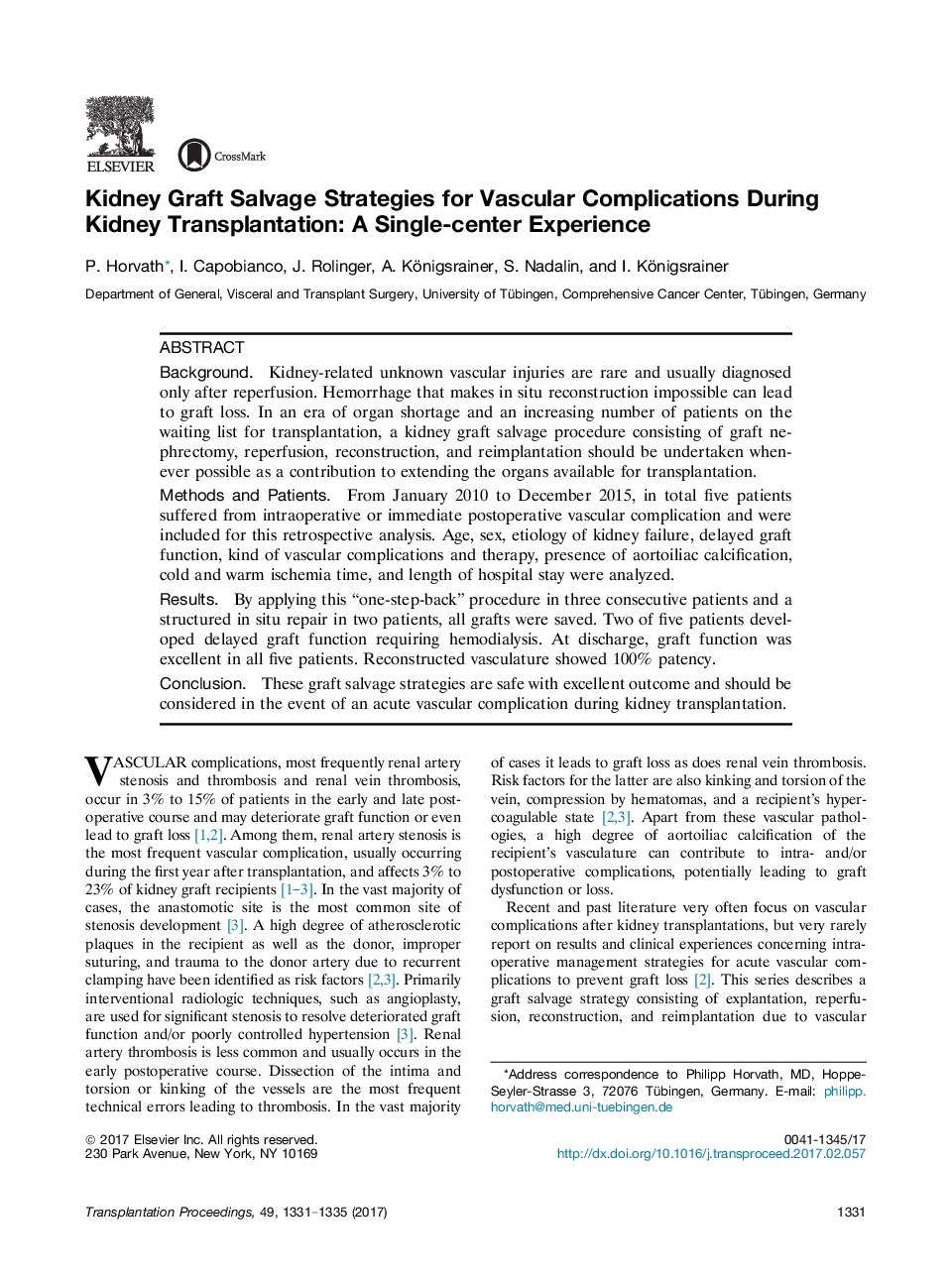| Article ID | Journal | Published Year | Pages | File Type |
|---|---|---|---|---|
| 5728690 | Transplantation Proceedings | 2017 | 5 Pages |
BackgroundKidney-related unknown vascular injuries are rare and usually diagnosed only after reperfusion. Hemorrhage that makes in situ reconstruction impossible can lead to graft loss. In an era of organ shortage and an increasing number of patients on the waiting list for transplantation, a kidney graft salvage procedure consisting of graft nephrectomy, reperfusion, reconstruction, and reimplantation should be undertaken whenever possible as a contribution to extending the organs available for transplantation.Methods and PatientsFrom January 2010 to December 2015, in total five patients suffered from intraoperative or immediate postoperative vascular complication and were included for this retrospective analysis. Age, sex, etiology of kidney failure, delayed graft function, kind of vascular complications and therapy, presence of aortoiliac calcification, cold and warm ischemia time, and length of hospital stay were analyzed.ResultsBy applying this “one-step-back” procedure in three consecutive patients and a structured in situ repair in two patients, all grafts were saved. Two of five patients developed delayed graft function requiring hemodialysis. At discharge, graft function was excellent in all five patients. Reconstructed vasculature showed 100% patency.ConclusionThese graft salvage strategies are safe with excellent outcome and should be considered in the event of an acute vascular complication during kidney transplantation.
